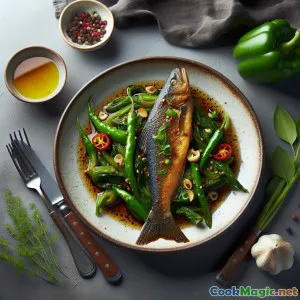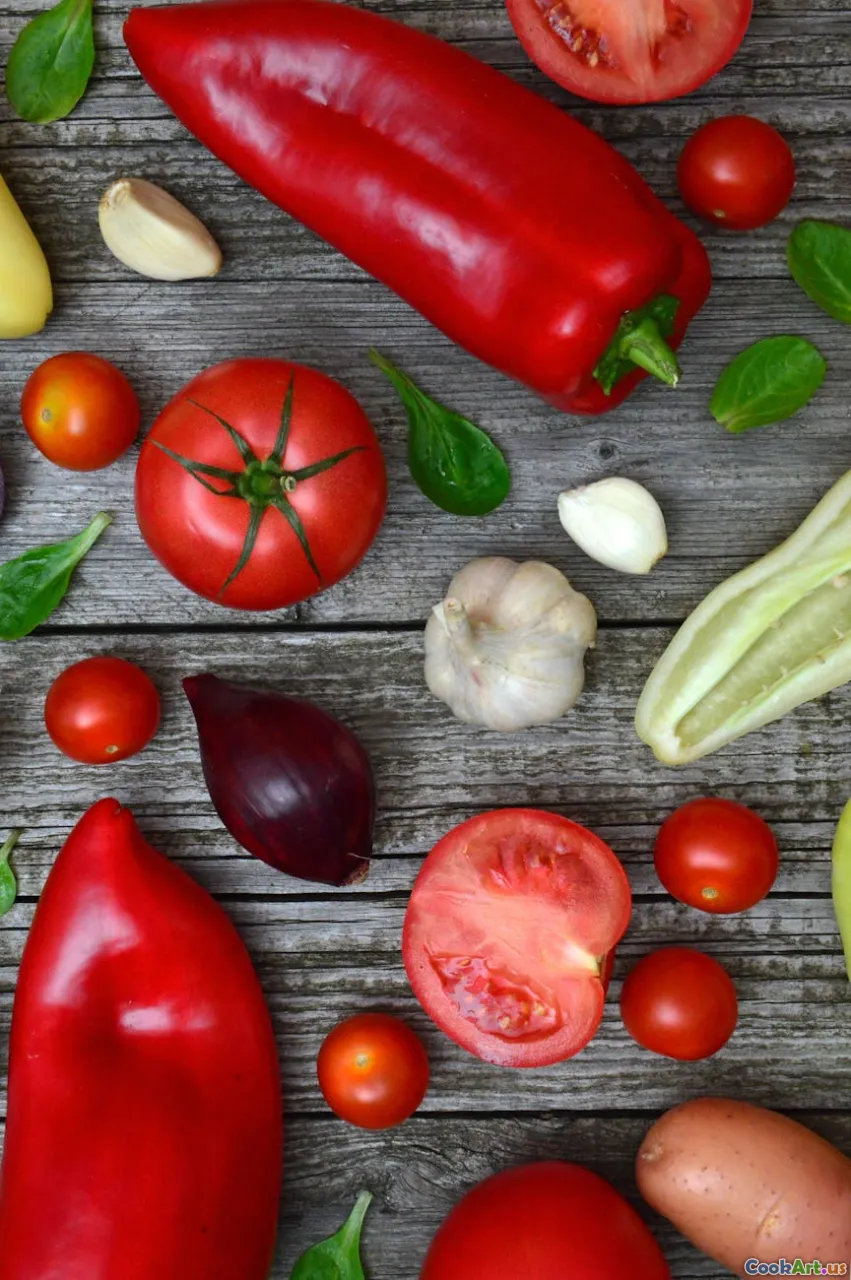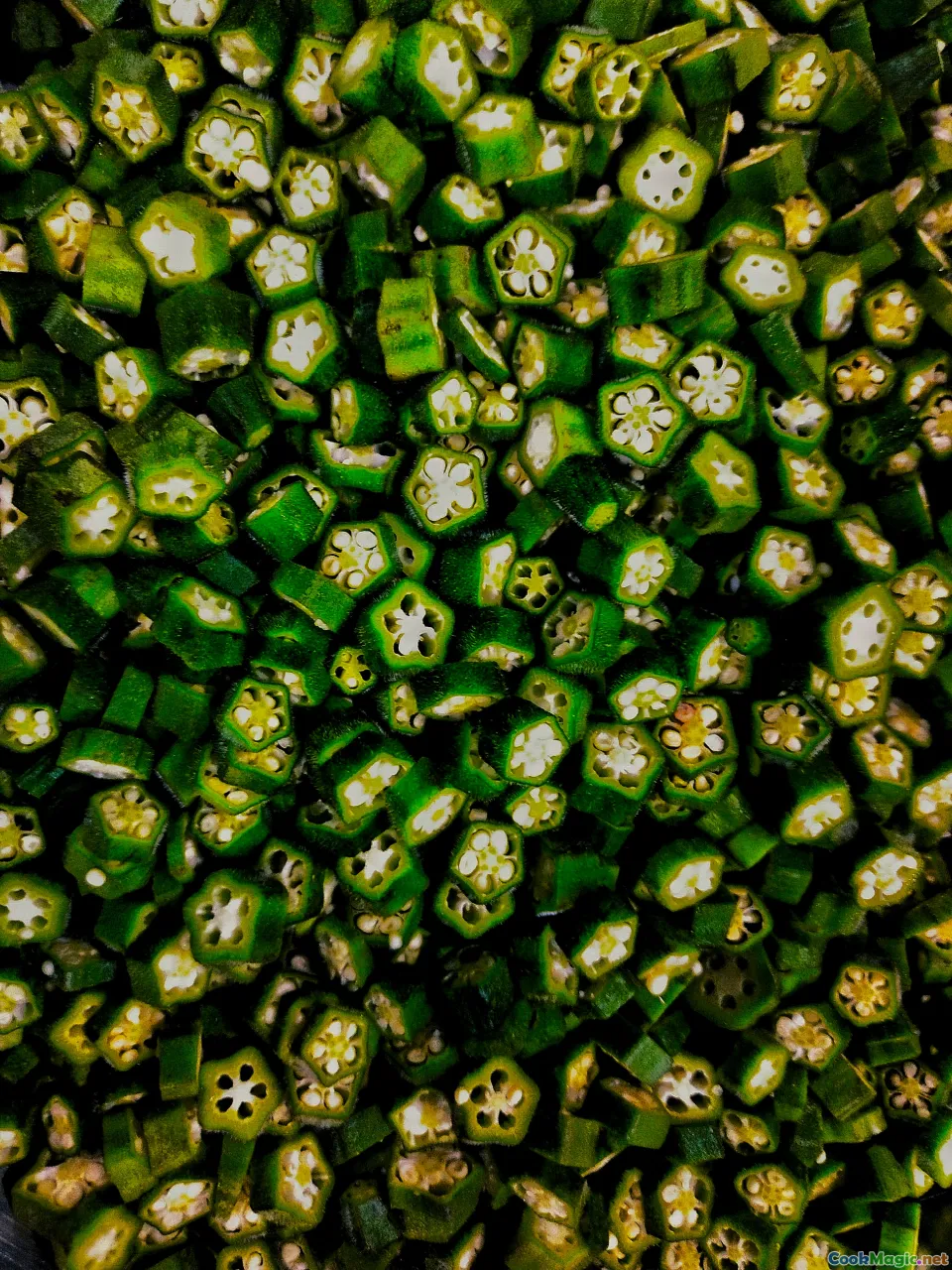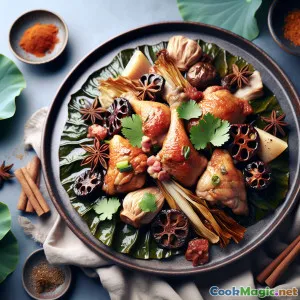
Bagre guisado con pimiento verde y ajo silvestre
(Braised Catfish with Green Pepper & Wild Garlic)
(0 Reseñas)0
346
octubre 27, 2025
Informar de un problema
Ingredientes
-
800 grams Filetes de bagre con piel
(Bone-in adds flavor; fillets also work)
-
1.25 tsp Sal kosher
(Divide for seasoning and broth)
-
0.5 tsp Pimienta blanca molida
(For gentle heat without dark color)
-
30 ml Vino de Shaoxing
(Sub dry sherry if needed)
-
30 ml Salsa de soja ligera
(Adds savory depth to the braise)
-
16 grams Maicena (para rebozar)
(Light coating to help sear and thicken)
-
8 grams Maicena (para slurry)
(Combine with water to finish sauce)
-
30 ml Agua (para slurry)
(Cold water prevents clumps)
-
45 ml Aceite de cacahuete o de colza
(High-heat neutral oil for searing)
-
20 grams Jengibre fresco, en láminas finas
(Cuts any muddy aroma from catfish)
-
60 grams hojas de ajo silvestre (ramsons), deshilachadas
(Add near the end for brightness)
-
20 grams Ajo silvestre picado (bulbos o brotes)
(Boosts garlicky perfume)
-
150 grams Chiles verdes largos (suaves), cortados en diagonal
(Use Anaheim, shishito, or similar)
-
150 grams Pimiento verde, en láminas finas
(Adds body and sweetness)
-
12 grams Frijoles negros fermentados (douchi), enjuagados y triturados
(Savory depth; use sparingly)
-
400 ml Caldo de pollo sin sal
(Or light fish stock)
-
15 ml Vinagre de arroz
(Lift and balance the richness)
-
4 grams Azúcar granulado
(Balances bitterness of green peppers)
-
1 tsp Pimienta de Sichuan verde (qing huajiao), ligeramente trituradas
(Citrusy tingle; optional but lovely)
-
5 ml Aceite de sésamo tostado
(Fragrant finish)
(Bone-in adds flavor; fillets also work)
(Divide for seasoning and broth)
(For gentle heat without dark color)
(Sub dry sherry if needed)
(Adds savory depth to the braise)
(Light coating to help sear and thicken)
(Combine with water to finish sauce)
(Cold water prevents clumps)
(High-heat neutral oil for searing)
(Cuts any muddy aroma from catfish)
(Add near the end for brightness)
(Boosts garlicky perfume)
(Use Anaheim, shishito, or similar)
(Adds body and sweetness)
(Savory depth; use sparingly)
(Or light fish stock)
(Lift and balance the richness)
(Balances bitterness of green peppers)
(Citrusy tingle; optional but lovely)
(Fragrant finish)
Nutrición
- Porciones: 4
- Tamaño de porción: 1 tazón (350g)
- Calories: 395 kcal
- Carbohydrates: 0 g
- Protein: 38 g
- Fat: 20 g
- Fiber: 3 g
- Sugar: 4 g
- Sodium: 980 mg
- Cholesterol: 95 mg
- Calcium: 80 mg
- Iron: 2.2 mg
Instrucciones
-
1 - Prep aromatics and peppers:
Slice ginger thinly. Shred wild garlic leaves and mince bulbs/shoots. Slice long green chilies and green bell pepper into thin strips. Rinse fermented black beans and crush lightly.
-
2 - Season and lightly dredge fish:
Pat catfish dry. Season with 0.75 tsp salt and all white pepper. Sprinkle Shaoxing wine over fish and rest 5 minutes. Dust evenly with cornstarch for dredging, shaking off excess.
-
3 - Sear catfish:
Heat oil in a wide pot or wok over medium-high. Sear catfish in batches until lightly golden on both sides, 2–3 minutes per side. Transfer to a plate.
-
4 - Bloom aromatics:
Lower heat to medium. Add ginger, minced wild garlic bulbs/shoots, and fermented black beans (if using). Stir-fry 30–60 seconds until fragrant, avoiding browning.
-
5 - Add peppers:
Add long green chilies and bell pepper. Stir-fry 1–2 minutes to wilt slightly while keeping a crisp bite.
-
6 - Build braising base:
Pour in stock, light soy sauce, rice vinegar, sugar, remaining 0.5 tsp salt (to taste), and green Sichuan peppercorns (if using). Bring to a lively simmer.
-
7 - Braise catfish gently:
Return catfish to the pot in a single layer. Reduce heat to medium-low and braise uncovered 8–12 minutes, spooning broth over the fish until just cooked through.
-
8 - Thicken sauce:
Stir cornstarch with cold water to make a slurry. Drizzle into simmering broth while stirring gently until the sauce lightly coats a spoon.
-
9 - Finish with wild garlic leaves:
Fold in shredded wild garlic leaves and cook 30–60 seconds until just wilted. Adjust seasoning with salt or vinegar if needed.
-
10 - Rest and Serve:
Turn off heat. Drizzle sesame oil. Let rest 2 minutes to settle. Serve with steamed rice or rice noodles and plenty of peppers.
Slice ginger thinly. Shred wild garlic leaves and mince bulbs/shoots. Slice long green chilies and green bell pepper into thin strips. Rinse fermented black beans and crush lightly.
Pat catfish dry. Season with 0.75 tsp salt and all white pepper. Sprinkle Shaoxing wine over fish and rest 5 minutes. Dust evenly with cornstarch for dredging, shaking off excess.
Heat oil in a wide pot or wok over medium-high. Sear catfish in batches until lightly golden on both sides, 2–3 minutes per side. Transfer to a plate.
Lower heat to medium. Add ginger, minced wild garlic bulbs/shoots, and fermented black beans (if using). Stir-fry 30–60 seconds until fragrant, avoiding browning.
Add long green chilies and bell pepper. Stir-fry 1–2 minutes to wilt slightly while keeping a crisp bite.
Pour in stock, light soy sauce, rice vinegar, sugar, remaining 0.5 tsp salt (to taste), and green Sichuan peppercorns (if using). Bring to a lively simmer.
Return catfish to the pot in a single layer. Reduce heat to medium-low and braise uncovered 8–12 minutes, spooning broth over the fish until just cooked through.
Stir cornstarch with cold water to make a slurry. Drizzle into simmering broth while stirring gently until the sauce lightly coats a spoon.
Fold in shredded wild garlic leaves and cook 30–60 seconds until just wilted. Adjust seasoning with salt or vinegar if needed.
Turn off heat. Drizzle sesame oil. Let rest 2 minutes to settle. Serve with steamed rice or rice noodles and plenty of peppers.
Más información sobre: Bagre guisado con pimiento verde y ajo silvestre
Why this recipe works
Braised Catfish with Green Pepper and Wild Garlic is built on contrasts: plush, silky fish nestled in a verdant, herbal sauce that balances chili warmth, garlicky perfume, and a gentle tang. Catfish is ideal for braising—its firm, fatty flesh remains succulent and resists flaking apart, while the skin enriches the broth with gelatin. Green peppers bring grassy aroma and brightness without overpowering heat, and wild garlic (also known as ramsons) supplies a springlike, woodsy note that lands somewhere between garlic and chive.
Several small decisions make this dish sing. Lightly dredging the fish in cornstarch gives it a delicate crust so it doesn’t shred during the braise, and it quietly thickens the sauce later. Blooming ginger, wild garlic bulbs, and fermented black beans awakens deep, savory layers, while rice vinegar and a touch of sugar steer the sauce away from bitterness. Finishing with shredded wild garlic leaves keeps the flavor fresh and green.
Roots and cultural notes
This recipe nods to Southwest China—think Yunnan and neighboring regions—where green chilies, fresh herbs, and bright, sour accents define many homestyle braises. Yunnan cooks prize seasonal greens and wild-foraged flavors, and wild garlic fits beautifully into that tradition. At the same time, spring ramps and ramsons in Europe share the same botanical family and flavor profile, making this dish feel comfortably at home across borders. Catfish, widely enjoyed throughout China and the American South, bridges cultures with its versatility and gentle sweetness.
Green peppers here aren’t just bell peppers. Long, mild chilies (like Anaheim, Hungarian wax, or shishito) contribute a verdant aroma and a whisper of heat. If you enjoy a citrusy tingle, a small pinch of green Sichuan peppercorns elevates the perfume without overpowering the fish; it adds a fresh, piney brightness distinct from the red varieties used in many Sichuan classics.
Tips, techniques, and key moves
- Control muddy aromas: A brief seasoning rest with Shaoxing wine and ginger is classic for freshwater fish, taming any pondiness without masking the fish’s sweetness.
- Sear gently: You’re setting the surface, not chasing deep browning. A light golden tint is enough to help the fish hold together during the braise.
- Pepper management: Add the peppers early enough to perfume the broth but not so long that they lose color and snap. They should still look green and lively on the plate.
- Thicken lightly: The goal is a nappe consistency—the sauce should coat a spoon thinly. Too thick, and it can feel heavy against the delicate fish.
- Handle wild garlic wisely: Bulbs/shoots behave like regular garlic—bloom them early. Leaves act like tender herbs—add at the end to prevent bitterness.
Ingredient swaps and sourcing
- Fish alternatives: Striped bass, barramundi, tilapia, or trout fillets can stand in. Choose thicker cuts and reduce braising time slightly for more delicate fish.
- Wine: Dry sherry substitutes well for Shaoxing. If avoiding alcohol, add a splash more rice vinegar and a pinch of sugar.
- Fermented black beans: If unavailable, a scant teaspoon of white miso or Korean doenjang echoes the savory funk.
- Wild garlic: Ramps, garlic chives, or a mix of scallion greens and a little minced garlic provide a similar effect.
- Stock: Unsalted chicken stock keeps flavors clean; a light fish fumet is even better if you have it.
Make-ahead and storage
- Prep in parts: Slice peppers and aromatics up to a day ahead and keep chilled. Mix the slurry just before using; it thickens best when fresh.
- Leftovers: Store in an airtight container up to 2 days. Reheat gently in a covered pan with a splash of stock to loosen the sauce. Avoid microwaving on high, which can toughen fish.
Serving ideas and pairings
- Starches: Steamed jasmine rice, short-grain rice, or slippery rice noodles are perfect. For a lighter table, spoon it over blanched mung bean noodles.
- Sides: Stir-fried tender greens (pea shoots, bok choy, or spinach) echo the dish’s spring energy. A pickled cucumber salad complements the herbal warmth.
- Drinks: A crisp pilsner, a light pét-nat, or a dry Riesling keeps pace with the aromatics. For tea, try jasmine or a lightly roasted oolong.
Unique aspects
What sets this recipe apart is its green-on-green layering of flavor: mild chilies, bell pepper, wild garlic bulbs, and wild garlic leaves. You taste heat, herb, and a teasing tingle without the heaviness of a dark soy or chili oil braise. It embodies the idea of a “green braise,” where freshness is the headline and richness plays support.
Cooking this dish is an exercise in balance. The fish should flake with a nudge, the peppers should still glisten and snap, and the sauce should feel satin-smooth yet light. When everything lands, you get a bowl that feels restorative—bright enough for spring, comforting enough for chilly nights, and memorable for anyone who loves the meeting point of river fish and wild herbs.























